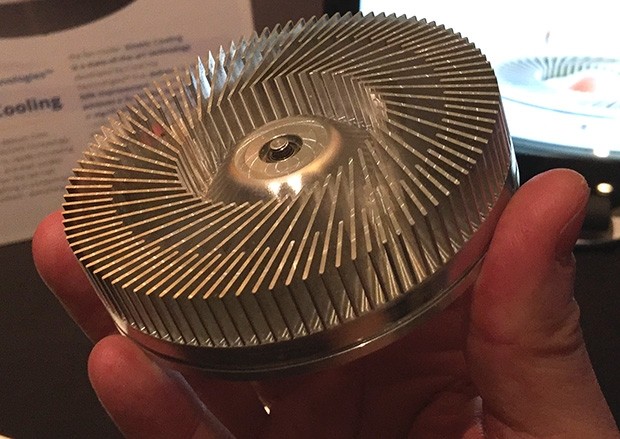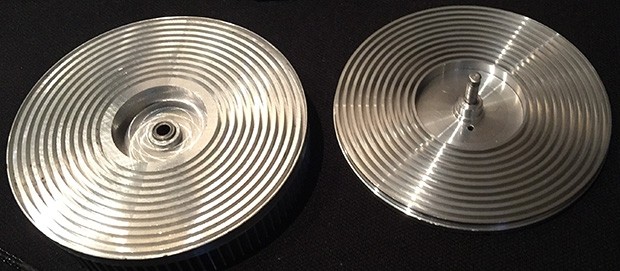
The PC cooling market has gone largely unchanged for years. Enthusiasts can typically choose between a high-end heatsink with an array of heatpipes, fins and a mixture of copper and aluminum or a self-contained liquid cooling kit that transfers heat to a radiator for expulsion. Both, however, usually rely on fans to draw the heat away from the source.
In July 2011, Sandia National Laboratories unveiled a new device called the Air Bearing Heat Exchanger that promised to dramatically change the air-cooling landscape. It seemed promising enough but we haven’t heard anything more on the matter… until now.

The technology has resurfaced at CES albeit under a different name. Cooler Master has partnered with a company called CoolChip Technologies and is showcasing what appears to be an identical approach to what we saw several years ago from Sandia.
It’s being called the Kinetic Cooling Engine and just like the original, this cooler consists of a finned heatsink that rotates atop a thin cushion of air above a stationary base. Because the radial fins of the heatsink spin on their own, there’s no need for a separate cooling fan.
This method is said to eliminate much of the dead air associated with typical tower heatsinks – spots that remain hot because they don’t get sufficient airflow. Cooler Master claims it offers 50 percent better cooling than a standard heatsink and is half the size. What’s more, it’s also virtually silent compared to a blower-style fan.
Its small size means it could be an excellent alternative for small form factor builds. The device appears to still be in the prototype phase so it’ll likely be a bit longer before we see retail solutions crop up.